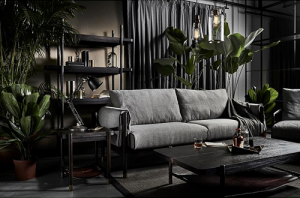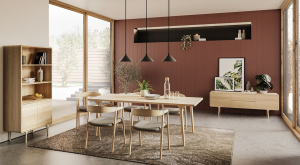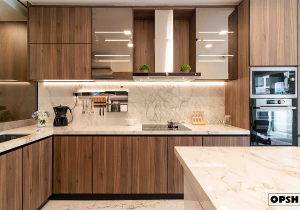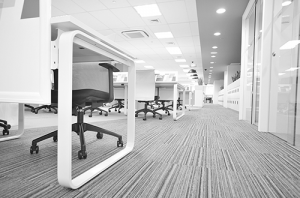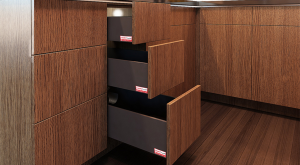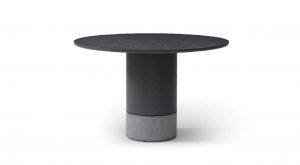Featured Post
Top Garden Design Ideas for Small Spaces
Do you dream of having a beautiful garden but feel limited by your small outdoor space? You're not alone. Many people face the challenge of creating a green oasis in a compact area, whether it's a tiny balcony, a small patio, or a petite backyard. But here's the good news: with a little creativity and some smart design choices, you can transform even the smallest space into a stunning garden that you'll love spending time in.
In this article, we'll explore the top garden design ideas for small spaces. From vertical gardening and container gardening to choosing the right furniture and plants, we'll cover everything you need to know to make the most of your limited area. We'll also discuss how to use lighting, water features, and color and texture to enhance your space. By the end, you'll have a wealth of ideas and inspiration to create your own small-space garden paradise.
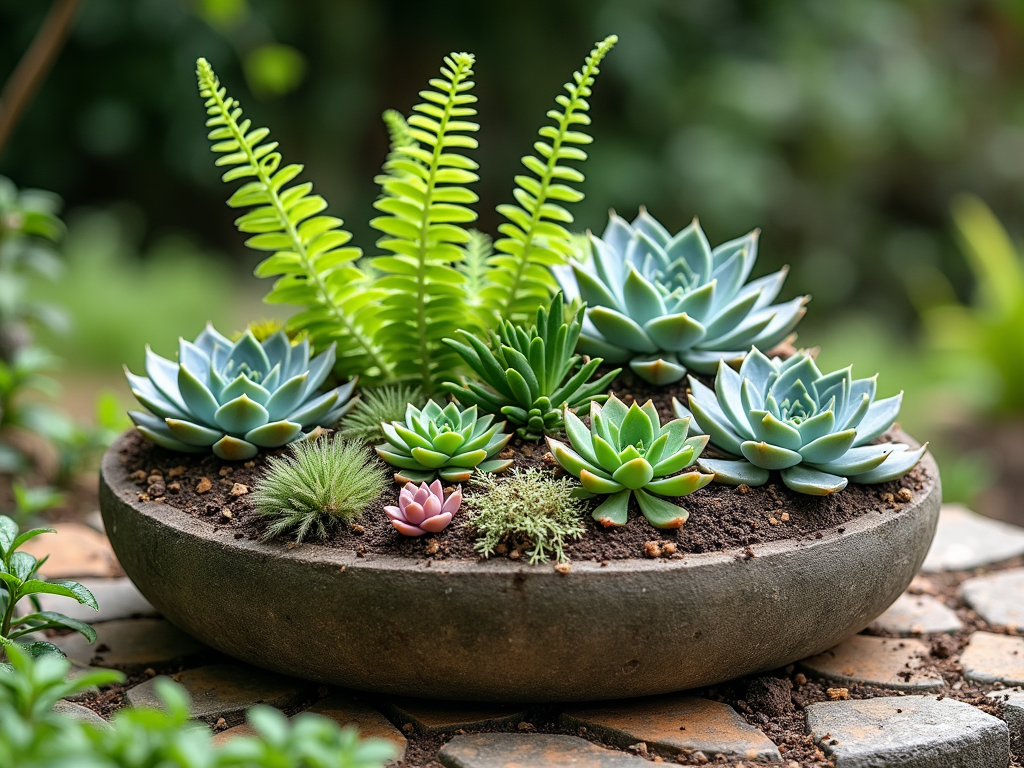
Vertical Gardening
Vertical gardening is a fantastic way to maximize space in a small garden. By growing plants upwards instead of outwards, you can create a lush, green environment without taking up valuable floor space. This technique is especially useful for urban gardeners who may only have a small balcony or patio to work with.
One popular method of vertical gardening is using wall-mounted planters. These can be attached to a wall or fence, allowing you to grow a variety of plants, from flowers to herbs, in a compact area. Another option is to use trellises or arbors to support climbing plants like ivy, clematis, or even vegetables like tomatoes and cucumbers.
Hanging baskets are another great way to add greenery to a small space. They can be hung from railings, hooks, or even from the ceiling if you have a covered patio. Hanging baskets are perfect for trailing plants like petunias, fuchsias, or ferns, which can create a cascading effect that adds depth and interest to your garden.
In my experience, vertical gardening can also be a great way to add privacy to a small outdoor space. By growing tall plants or creating a living wall, you can create a sense of seclusion and make your garden feel more intimate.
For those interested in learning more about vertical gardening, I recommend checking out this guide from the University of Maryland Extension: Vertical Gardening. It provides detailed information on different techniques and plant choices for vertical gardens.

Container Gardening
Container gardening is another excellent strategy for small spaces. Unlike traditional in-ground gardening, container gardening allows you to grow plants in pots, planters, or other containers, which can be placed on patios, balconies, or even windowsills.
One of the biggest advantages of container gardening is its flexibility. You can easily move containers around to take advantage of sunlight or to change the look of your space. This is particularly useful in small gardens where every inch counts.
When choosing containers, it's important to consider both aesthetics and functionality. Look for containers that complement your garden's style, but also make sure they have adequate drainage to prevent waterlogging. You can use a variety of materials, from classic terracotta to modern fiberglass, depending on your preference.
In terms of plant selection, almost anything can be grown in containers, from flowers and herbs to small trees and shrubs. However, it's important to choose plants that are well-suited to container life. Look for varieties that are labeled as "dwarf" or "compact," as these will be less likely to outgrow their containers.
For example, you might choose a dwarf lemon tree for a sunny spot, or a collection of succulents for a low-maintenance display. Herbs like basil, thyme, and mint are also great choices for containers, as they can be harvested regularly and don't require a lot of space.
To create a visually appealing container garden, try grouping containers of different sizes and heights together. This can create a sense of depth and make your space feel larger. You can also use containers to define different areas in your garden, such as a dining area or a relaxation zone.
For more tips on container gardening, I suggest this resource from the Royal Horticultural Society: Container Gardening. It offers comprehensive advice on everything from choosing containers to caring for your plants.

Multi-functional Furniture
In a small garden, every piece of furniture needs to earn its keep. That's why multi-functional furniture is so important. By choosing pieces that serve more than one purpose, you can maximize your space without sacrificing style or comfort.
One great example is a storage bench. Not only does it provide seating, but it also offers a place to store gardening tools, cushions, or other outdoor accessories. This can help keep your space tidy and clutter-free.
Another option is a foldable table. When not in use, it can be folded away to free up floor space. This is particularly useful if you like to entertain but don't have room for a permanent dining setup.
Modular furniture is also a trend worth considering. Pieces that can be rearranged or expanded allow you to adapt your space to different needs, whether you're hosting a party or just relaxing with a book.
When it comes to patio furniture trends for summer, lightweight and weather-resistant materials are popular choices. Look for furniture made from aluminum, resin wicker, or teak, which can withstand the elements and are easy to move around.
For inspiration on choosing the right furniture for your small space, check out this article from the American Society of Landscape Architects: Outdoor Furniture for Small Spaces. It provides expert advice on selecting furniture that fits both your style and your space constraints.
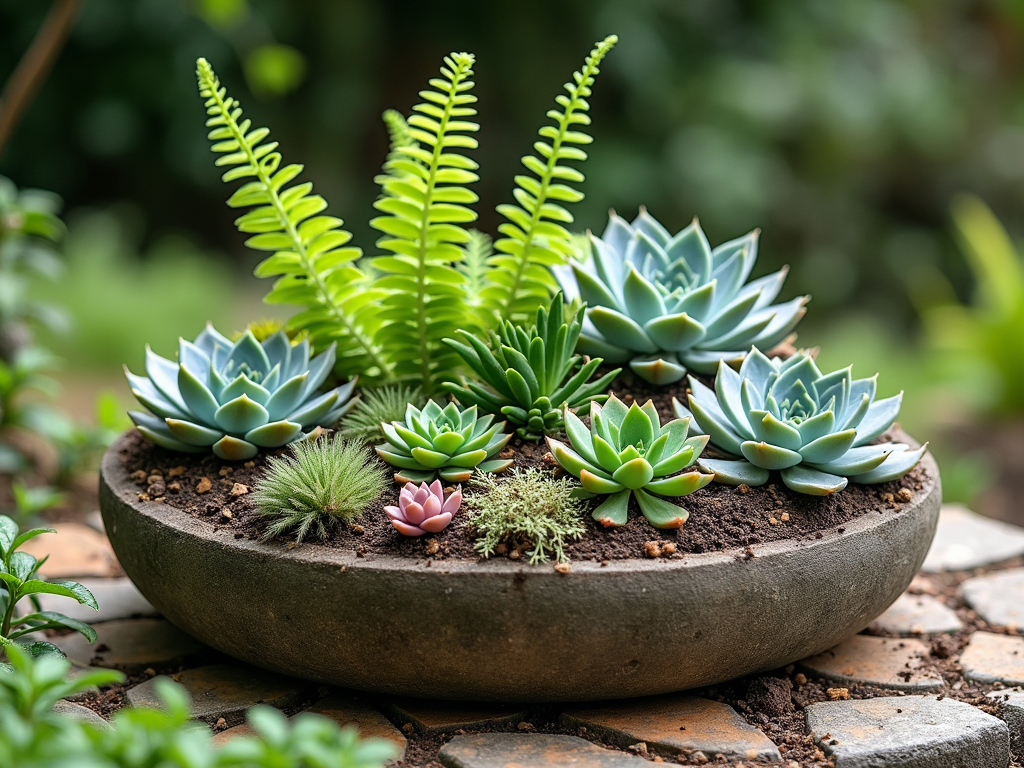
Plant Selection
Choosing the right plants is crucial for a successful small garden. In a limited space, you want plants that are not only beautiful but also well-behaved, meaning they won't outgrow their allotted area or require excessive maintenance.
Dwarf varieties are an excellent choice for small gardens. These plants have been bred to stay compact, making them perfect for containers or small beds. For example, you might choose a dwarf boxwood for a low hedge or a dwarf conifer for year-round interest.
Vertical growers are another smart option. Plants like climbing roses, jasmine, or even some vegetables can be trained to grow upwards, taking advantage of vertical space.
Low-maintenance plants are also a good idea for small gardens, as they require less time and effort to care for. Succulents, for instance, are very forgiving and can thrive with minimal watering. Ornamental grasses can add texture and movement without needing constant attention.
When arranging your plants, think about creating layers. Place taller plants at the back or in the center, with shorter plants in front. This can create a sense of depth and make your garden feel larger.
For more information on selecting plants for small spaces, I recommend this guide from Cornell University's Cooperative Extension: Plants for Small Gardens. It includes a list of recommended plants and tips for designing a small garden.

Lighting
Lighting is often overlooked in small gardens, but it can make a big difference in how the space feels and functions. Good lighting can extend the usability of your garden into the evening hours and create a magical atmosphere.
There are many types of outdoor lighting to choose from. String lights are a popular option for small spaces because they can be draped over railings, wrapped around trees, or hung from above to create a cozy glow.
Lanterns are another great choice. They can be placed on tables, hung from hooks, or even set on the ground to illuminate pathways.
Solar-powered lights are an eco-friendly option that can be placed anywhere in your garden without the need for wiring. They come in a variety of styles, from stake lights to decorative lanterns.
When planning your lighting, think about what you want to achieve. Do you want to highlight certain features, like a water fountain or a beautiful plant? Or do you want to create a general ambiance for entertaining?
For example, you might use spotlights to illuminate a vertical garden or place lanterns along a pathway to guide guests to a seating area.
For more ideas on outdoor lighting, check out this resource from the Lighting Research Center at Rensselaer Polytechnic Institute: Outdoor Lighting Design. It provides technical guidance on designing effective and efficient outdoor lighting.

Water Features
Even in a small garden, a water feature can add a lot of charm and interest. The sound of trickling water can create a soothing atmosphere, and water features can also attract birds and other wildlife.
For small spaces, consider a compact fountain or a birdbath. These can be placed in a corner or even on a tabletop. If you have a bit more room, a small pond or a wall-mounted water feature could be an option.
When choosing a water feature, make sure it's proportional to your space. A large fountain might overwhelm a tiny patio, while a small birdbath could get lost in a larger area.
Also, think about maintenance. Some water features require more upkeep than others, so choose one that fits your lifestyle.
For inspiration and practical advice on incorporating water features into small gardens, I suggest this article from the National Gardening Association: Water Features for Small Gardens. It includes tips on selection, installation, and care.
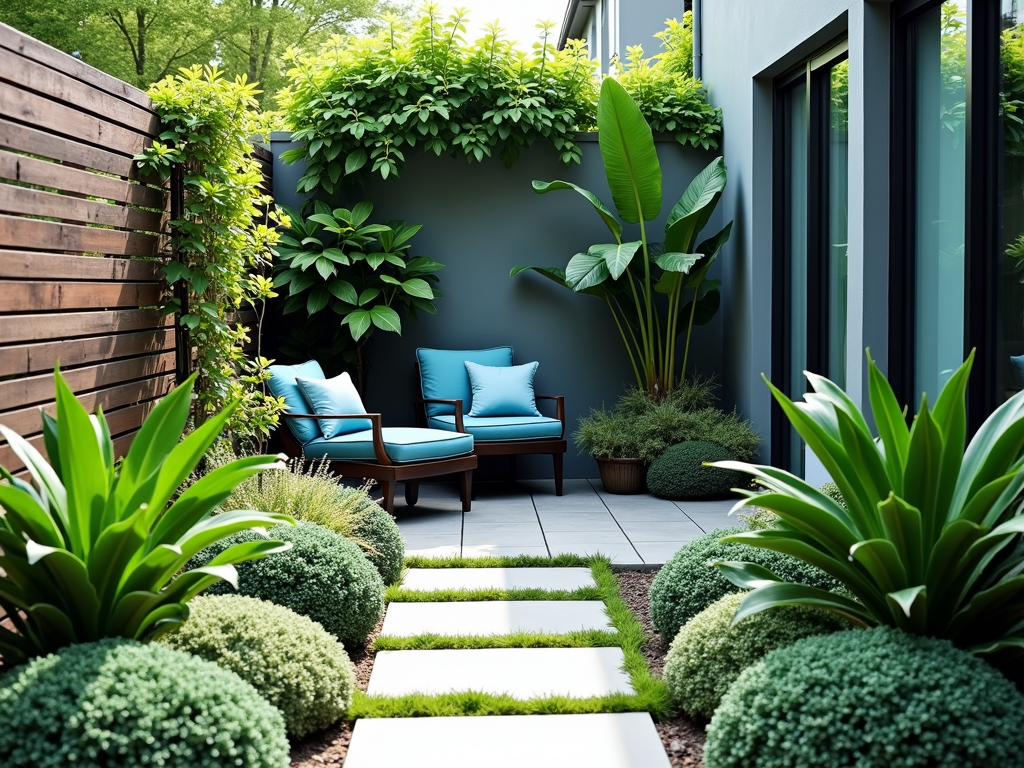
Color and Texture
In a small garden, every element counts, so it's important to choose colors and textures that work well together and create the desired effect.
One approach is to stick to a limited color palette. For example, you might choose plants with green and white foliage and flowers, accented with blue or purple accessories. This can create a cohesive and calming look.
Alternatively, you could go for a more vibrant scheme, using bold colors to make a statement. Just be careful not to overdo it, as too many colors can make a small space feel chaotic.
Texture is also important. Mixing different textures can add depth and interest to your garden. For instance, pair smooth-leaved plants with those that have rough or fuzzy leaves, or combine fine-textured grasses with bold, structural plants.
Don't forget about hardscape elements like furniture, containers, and decor. Choose materials and finishes that complement your plants and overall design.
For example, if you have a modern garden, you might opt for sleek, metal furniture and minimalist containers. For a more rustic look, wooden furniture and terracotta pots could be a better fit.
To learn more about using color and texture in garden design, I recommend this resource from the University of California Agriculture and Natural Resources: Color in the Garden. It offers insights into color theory and how to apply it in your garden.
Creating a beautiful garden in a small space is all about creativity and smart design choices. By utilizing vertical space, choosing the right plants and furniture, and adding elements like lighting and water features, you can transform even the tiniest outdoor area into a stunning retreat. Remember to keep your design cohesive with thoughtful use of color and texture, and don't be afraid to experiment with different ideas until you find what works best for your space.


